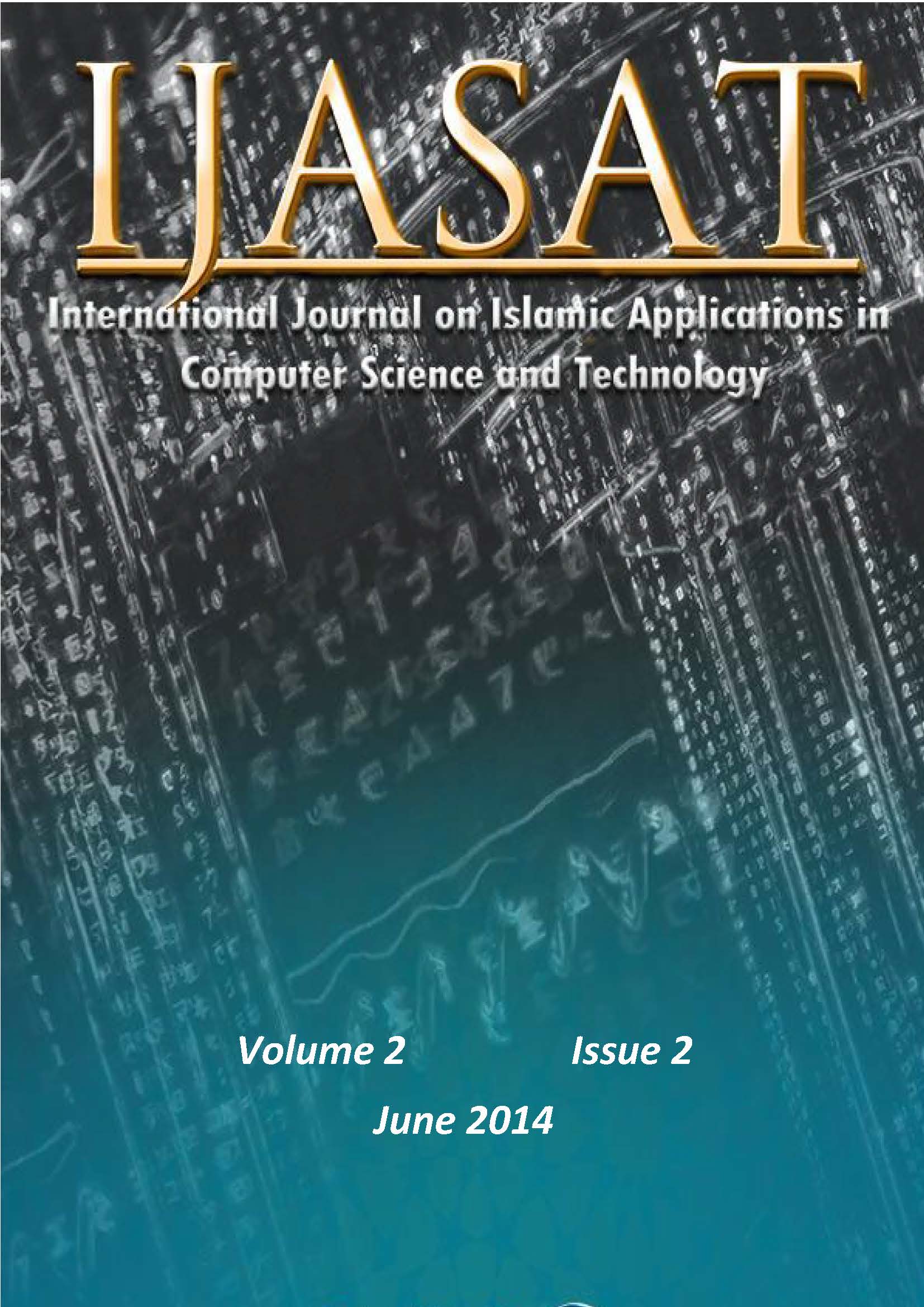Foreword
Abstract
By the grace of Allah, it is a great pleasure to introduce the first issue of the second volume of:
The International Journal on Islamic Applications in Computer Science and Technology
The success and the welcome of the first four issues of this Journal by researchers from many countries, gave us great encouragement for continuing issuing in the due time. By this number the Journal is entering its second year.
This Journal is aimed at publishing original research papers in the field of Islamic Applications in computer science and technology. This field is catching a momentum in recent years. As a Journal interested in this field, it is the first International Journal of this specific field. As research is growing in this field, we hope that this Journal will be a platform for researchers working in the field to publish their research.
This issue contains four papers. Three papers are related to the Holly Quran and the fourth one related to a mobile Islamic application.
The first paper is entitled:
Semantic Web Application for Historical Concepts Search in Al-Quran.
In this paper, a concept of semantic web is introduced with the aim of applying semantic web technology to retrieved historical concepts from the Holy Quran. The semantic web technology will improve the precision of knowledge retrieval from Quran. Ontology and Jena inference engine are used to answer queries in natural language, which is related to the historical concepts in Quran. The paper includes experiments to use queries that were asked by the visitor of Islamic Research foundation website. The result shows that the precision is improved from traditional keywords search. This paper highlights the potential of semantic web technology in retrieving the related Islamic documents.
The second paper is entitled:
mFakih: Modelling Mobile Learning Game to Recite Quran for deaf Children
Fakih is an innovative approach to teach Arabic for children with hearing impairment. This technique assists educators to teach deaf students to recite the Quran in more practical way by using numbers and colors. However, some children were getting tired when they have to pay attentions on the same entity every day. Thus, this study designed a model consisting of requirements and architecture of mobile game that can be used to develop an application on mobile devices. The model was validated through prototype development. The result shows that the prototype can be developed by using the model created called mFakih
The third paper is entitled:
Intelligent Search Engine For The Holy Quran
The main idea of this paper is to build an intelligent search engine for the Holy Quran with full-text features to be a tool that helps the researcher in the Holy Quran fields and the researcher in numerical miracle of Quran. The search engine gives detailed numerical information and offers facilities that help to analyze this information. Furthermore, it solves many limitations of the other search engines. The paper describes the relational database, which contains main tables that holds detailed information about every segment of the Holy Quran. In addition, it contains tables, which provide valuable information about the relations between chapters and verses. These relations are automatically extracted from the main tables. A Graphical User Interface (GUI) application consisting of browsing and display sections, search sections and numerical miracle analysis sections. The intelligent search engine provides detailed information for the search results and gives answers for several questions, which range from simple to complex ones.
The last paper is entitled:
My E-Mosque System: An Islamic Android Companion
This paper describes the documentation for the system development of an android application, My E-Mosque. This mobile application includes different types of functions such as Qiblat direction, Prayer Time, D'zikir, Al-Quran, NFC silent mode and daily du’a. It explains about the system development and its entire process by describing the problem, its comparison with existing mobile applications.

